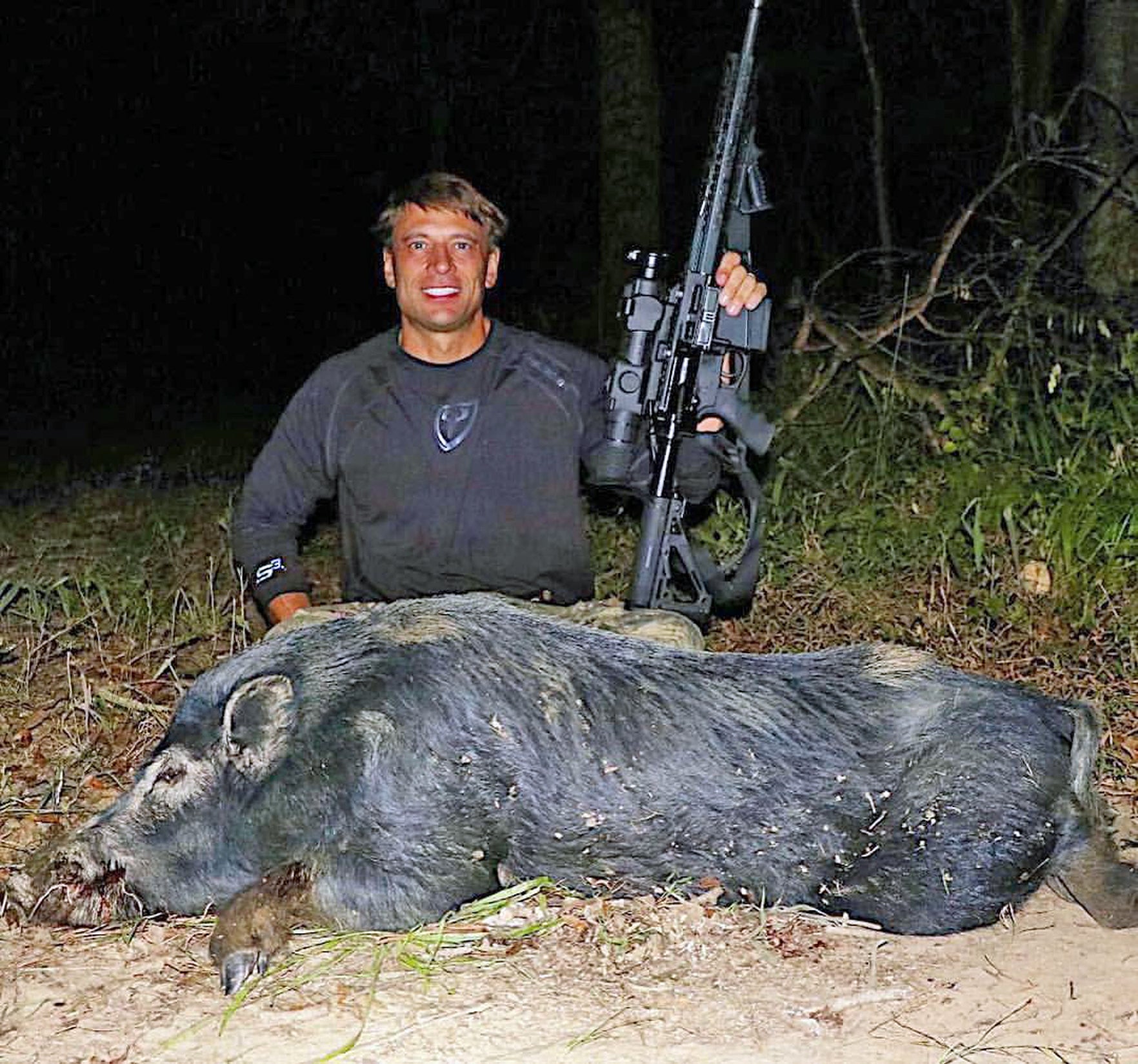The possession, transportation and/or release of live feral hogs is banned in Alabama. The WFF Enforcement Section recently arrested 13 Alabama residents for possession of live feral hogs and issued warrants for two residents in Florida and one in Mississippi.
The hog problem became so bad for the Jollys that they were unable to grow crops that would benefit the preferred wildlife, mainly white-tailed deer and wild turkeys.
“We can’t grow chufa,” Ron said. “We can’t grow corn. Even in the green fields, when the wheat makes heads the hogs get it. It really limits what we can do. As a result, we haven’t killed a mature buck that weighed more than 200 pounds in a while. Four- to five-year-old bucks used to average between 210 and 215 pounds. The last three years we’ve killed four- and five-year-old bucks that weighed 175 to 185 pounds. I think that’s a direct result of what we had to do, which is not grow corn and stuff they can feed on in the summer time.
“We had to change everything. Quite frankly, the best thing we’ve done is plant clover in our green plots, which provides forage to the middle of June. After that, they’re on their own.”
Tes and Ron finally made the decision to invest in one of the trapping systems with an electronically controlled trap door.
“For the first time in six or seven years at least we feel like we’ve got a fighting chance,” Ron said. “Two different neighbors have also bought the systems, and we’re trying to build a co-op with other landowners. If a sounder comes on the place now, I feel like I’ve got a chance to get them all. It may take me a month to do it, but we’ve caught 47 hogs in the trap since the Fourth of July.”
The system the Jollys purchased allows remote monitoring of the corral and remote activation of the trap door.
“That’s absolutely the way to go. I’m sitting in Montgomery, and if a hog goes in the trap I can catch him,” Ron said. “The main thing it allows me to do is not drop the gate on two of 10. When we drop the gate, we know how many pigs are inside. We can drop the gate when all of them are inside and we can get them all.
“The answer is total sounder removal. And we need to expand our cooperative to get other people helping with the removal. I can do it, but if the guy across the fence is not doing it, all he’s doing is growing pigs for me to catch.”
The Alabama Cooperative Extension System (ACES) is trying to help with that effort to band landowners together in their battle against the hogs.
ACES has teamed with other agencies such as the Natural Resources Conservation Service (NRCS), Alabama Wildlife Federation and Alabama Soil and Water Conservation, to name a few, to develop a pilot program to both educate the public on the feral hog problem and provide information on traps from the cheapest option to the latest technology in hog traps.
The project involves purchasing a trailer that publicizes hog control efforts through a graphics message on each side. The trailer can be transported around Alabama to complement the seminars being conducted on hog control.
The second part of the project is to provide the public with the opportunity to rent one of the trap doors that can be monitored and closed remotely via a smartphone app, though the project is in its infancy and details are still being worked out.
WFF Technical Assistance Wildlife Biologist Matt Brock said there’s no doubt the insidious creep of the feral hog population continues throughout Alabama.
“We have noticed that hogs are showing up on trail cameras in areas they have not been seen before,” Brock said. “I’m getting requests for technical assistance from landowners who have never had hogs on their property before, so it appears they are still expanding their range. They are definitely on the move.
“And I don’t know how the drought is going to affect that. The last few complaints I’ve had were from people with farm ponds they use for livestock. The hogs have shown up because it’s about the only source of water unless they’re on a major creek or river drainage. The farmers don’t know what to think. They’re seeing them for the first time and are concerned about the impact of the hogs. The biggest question is what they need to do.”
Brock said he’s been making site visits to educate the landowners on what to do to prevent the hogs from doing extensive damage. The estimate of agricultural damage done by feral hogs is $1.5 billion annually in the U.S.
“The best answer to hogs is trapping the whole sounder,” Brock said. “That’s what I’ve been encouraging people to do. People will go out and shoot hogs. They think that by shooting two or three it might help eliminate the hog problem. In actuality, it doesn’t. I tell people to be patient and start pre-baiting. Try to find out how many are in the sounder. Then get them all to come into the trap together, even if it takes several weeks. Our goal is total sounder removal. That way you can remove that entire social unit from that particular area. Then monitor the area, and do it again if the hogs move back in.”








